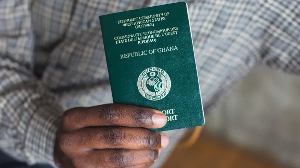Scope of floods
1. Flooding in Upper East, Upper West and Northern regions has killed 20 people and affected 260,000 according to the Government. Victims are spread as follows: Upper east 30,000 affected and 20 deaths; Northern region 227,817 affected and eight deaths; and Upper west 250 affected and four deaths.
2. In view of the magnitude of floods, the Government of Ghana has declared a state of emergency in the three inundated regions September.
3. Damage caused by the floods includes the collapse of nine bridges (six and two in Upper east and in Upper West respectively) and the destruction of water supply systems. Furthermore the losses of an unspecified quantity of cropped farms and livestock as well as the destruction of public infrastructures (schools, roads) have been reported. Access in some areas is a concern due to damaged roads.
4. There are additional concerns about a possible outbreak of waterborne diseases. Cases of diarrhoea, dysentery and cholera have been reported in the Upper East region. Lessons learnt from the severe floods that led to the displacement of as many as 290,000 people in the north in 1999, indicate that floods are primary vectors for waterborne diseases outbreak such as cholera.
Coordination
5. A three-day joint assessment mission led by the Government including national and international partners began today and will visit all the affected regions. The objectives of the assessment mission are, among other things, to gather further information on the number of people affected and/or displaced and to determine the impact of the floods on the humanitarian situation including food security. The findings will inform joint emergency response strategies and clearly delineate resource mobilization needs to provide food and non-food items to targeted affected populations. The United Nations Resident Coordinator, UNICEF, WFP, UNFPA as well as UNDAC and OCHA teams are part of the mission.
6. On 17 September, a delegation of the United Nations led by the Resident Coordinator met with Government authorities to reiterate the availability of the UN to support Government efforts to assist affected persons. The UN held a similar meeting with NGOs and donors to brief them on the current status of UN planning and to inform them of the joint assessment mission to be led by the government. In addition, CRS, Plan International and Actionaid shared information on the findings of their rapid assessments to some areas in the north.
National and international response
7. Regional authorities had appealed to the central government and humanitarian organizations for assistance.
8. The Ministry for the Interior has announced the establishment of an ``Inter-Ministerial Disaster Relief Committee and district task force teams to oversee activities in their respective communities``. So far, the Government has distributed several tons of relief items in distressed areas.
9. The Ghana Navy has also deployed equipment and a team who will assist with the ferrying of goods and persons to and from the cut-off areas.
10. United Nations organisations are evaluating the most effective means to ensure the arrival of a large consignment of emergency supplies including food, and also non-food items such as tents, blankets, tarpaulins and water purification supplies, generators, jerry cans, drinking water filters, mobile sanitary facilities, mosquito nets etc.
11. The Ghanaian Government has provided the Presidential jet plane to the joint assessment team to travel from Accra to Tamale. From Tamale to the affected areas (district level) the mission will travel on two helicopters facilitated by the French Embassy.
12. Between 14 and 16 September, an UNDAC (United Nations Disaster Assessment and Coordination) Team along with TSF and MapAction were deployed to Ghana to support the emergency response operations in the affected areas. OCHA’s Regional Office for West Africa (ROWA) has also fielded a team to support humanitarian coordination activities including the formulation of relevant resource mobilization frameworks and tools.
13. The Office of the United Nations Resident Coordinator in Ghana supported by the ROWA is centralising existing information on the situation and issuing regular updates. Other documents related to the floods in Ghana and West Africa are available at OCHA Regional Office for West Africa’s website at http://ochaonline2.un.org/Default.aspx?tabid=10305 and in reliefweb at http://www.reliefweb.int/rw/dbc.nsf/doc108?OpenForm&emid=FL-2007-000141-NGA&rc=1
For more information, please contact:-
Desk Officer:
(New York) - Ms. Rosa Malango
Office Tel: + 1 212 963 2380
Office Fax: + 1 212 963 3630
Email: malango@un.org
OCHA Regional Office for West Africa
Mr. Herve Ludovic deLys
Head of Regional Office
Office Tel: +221 869 85 00
Office Fax: +221 824 00 00
Email: Delys1@un.org
Regional Information Officer - on Mission in Ghana
Ms. Katy Thiam
Cell: +233 024 534 00 65
Email: thiamk@un.org
Press Contact:
(NY) - Ms. Stephanie Bunker
Office Tel: + 1 917 367 5126
Office Fax: + 1 212 963 1312
Email: bunker@un.org
(GVA) - Ms. Elisabeth Byrs
Tel: + 41 22 917 2653
Fax: + 41 22 917 0020
Email: byrs@un.org












